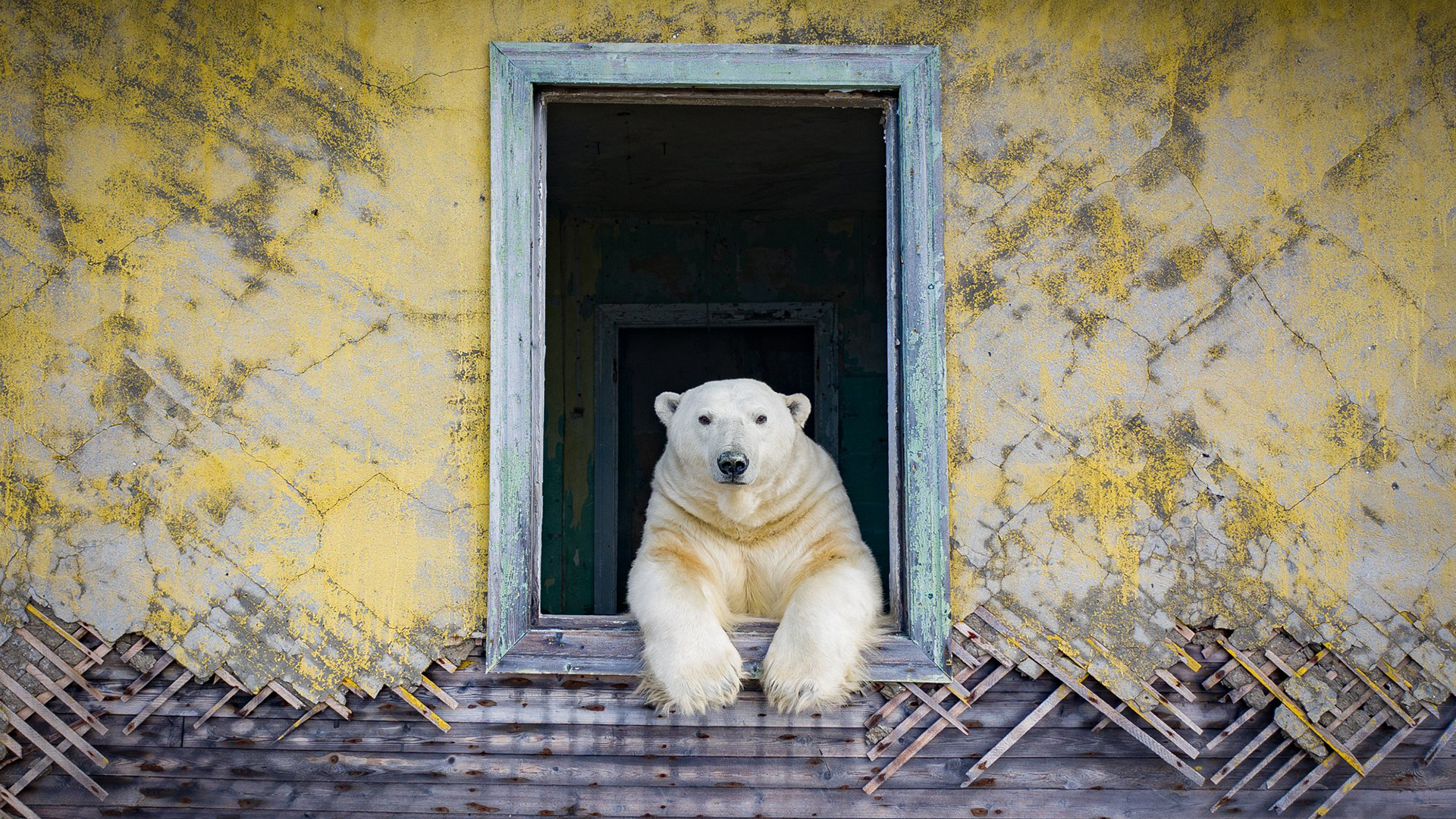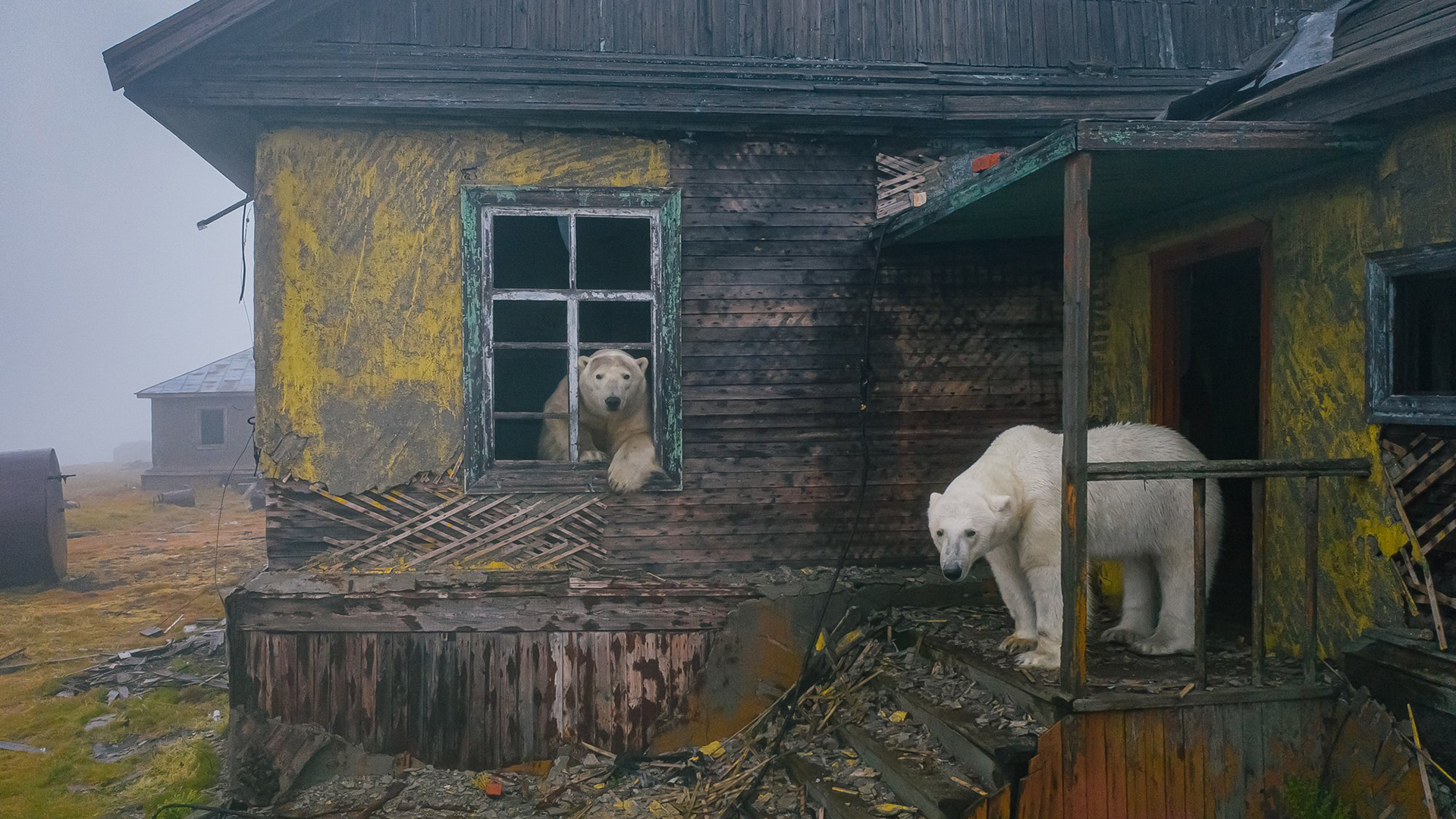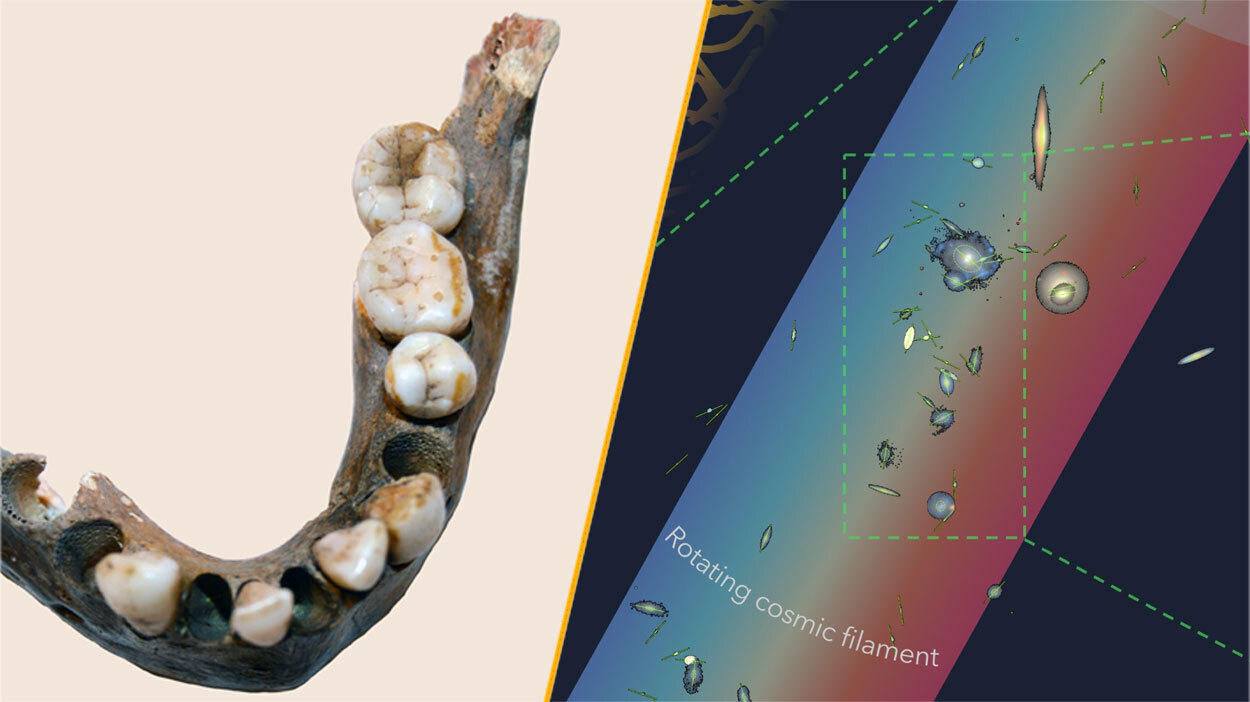See first-ever photos of polar bears playing house in the Russian Arctic
Decades after people moved out, polar bears moved in.

Dozens of polar bears have been making themselves at home in abandoned buildings on an Arctic island, and a Russian photographer recently captured remarkable photos of the bears peering through windows and standing on porches.
When photographer Dmitry Kokh traveled to the remote Russian region of northern Chukotka in late summer 2021, he was hoping to find polar bears to photograph on Wrangel Island, a natural reserve and World Heritage site that's protected by the United Nations Educational Scientific and Cultural Organization and is located above the Arctic Circle.
What he found instead was a strange and unexpected sight: On the smaller Kolyuchin Island to the south of Wrangel Island, more than 20 polar bears had taken up residence in buildings that were once part of a Soviet weather station. Kokh photographed the polar bears in their dilapidated homes and shared the photos on his website and on Instagram, alongside other examples of his dramatic marine wildlife photography, and the images struck a chord with viewers and quickly went viral, Kokh told Live Science.
Related: Polar bear photos: Stunning shots capture Earth's icons of climate change
As Kokh sailed 1,200 miles (2,000 kilometers) north to the islands from his starting point at Anadyr, the capital of Chukotka, he noticed that there was far more sea ice than is typical for Chukotka's northern coastline during the summer months. Abundant sea ice could explain why the bears were visiting Kolyuchin Island instead of sticking to their usual summer territories farther north, as polar bears use sea ice for hunting their seal prey, he said.
Kolyuchin is so small, "you can see almost the whole island from your boat," he said, and while there was once a Russian weather station on the island, it was abandoned in 1991 after the Soviet Union collapsed. Shortly after Kokh's boat docked near Kolyuchin to wait out a storm, "we saw some movement in the window of this weather station — and then we saw that it was a bear," Kokh said. "We saw one, then we saw another one, then 20 of them. And they all were inside this building."
To capture the photos, Kokh used a camera mounted on an aerial drone that had been modified with low-noise propellers, making it quiet enough to slowly approach the bears without disturbing them. In the photos, the bears appear unconcerned about the camera and photographer — but when it comes to polar bears, looks can be deceiving, Kokh warned.
Get the world’s most fascinating discoveries delivered straight to your inbox.
"Polar bears are very clever — and sometimes tricky — hunters," he said. "Sometimes they pretend they are not looking at you, and they are relaxed; at this moment, they are ready to attack."
A nature reserve employee was with the group at all times, carrying a rifle and flares as precautionary measures to ensure the team's protection. Polar bears weigh up to 1,700 pounds (770 kilograms), but for all that bulk, they are surprisingly quick, capable of galloping up to 24 mph (40 km/h), according to McGill University.
Polar bears usually inhabit remote parts of the Arctic that are far from humans, but climate change is reshaping their habitat and has even driven bears to invade towns in the Russian Arctic in search of food. Since 1979, the sea ice that the bears depend on for hunting has shrunk and grown thinner, and researchers predict that summer sea ice could vanish from the Arctic by the end of the century, Live Science previously reported.
Though polar bears face an uncertain future, these images of the bears peering out from ramshackle buildings are a reminder that life on Earth can persist even as human-made objects and structures break down, Kokh told Live Science.
"But life will exist forever only if we care about it," he added.
Originally published on Live Science.

Mindy Weisberger is a science journalist and author of "Rise of the Zombie Bugs: The Surprising Science of Parasitic Mind-Control" (Hopkins Press). She formerly edited for Scholastic and was a channel editor and senior writer for Live Science. She has reported on general science, covering climate change, paleontology, biology and space. Mindy studied film at Columbia University; prior to LS, she produced, wrote and directed media for the American Museum of Natural History in NYC. Her videos about dinosaurs, astrophysics, biodiversity and evolution appear in museums and science centers worldwide, earning awards such as the CINE Golden Eagle and the Communicator Award of Excellence. Her writing has also appeared in Scientific American, The Washington Post, How It Works Magazine and CNN.



